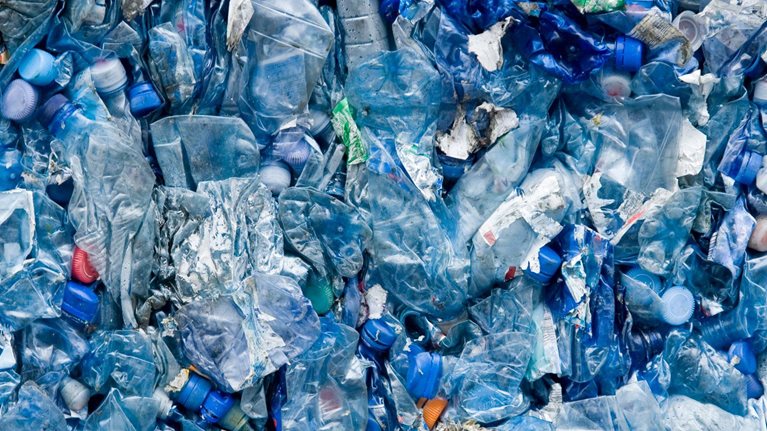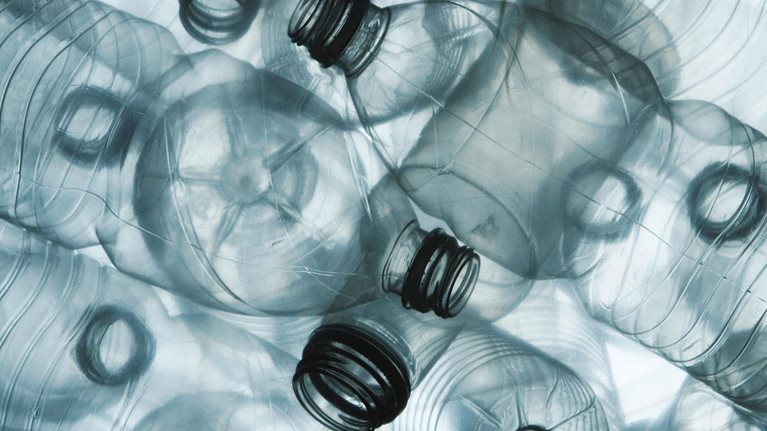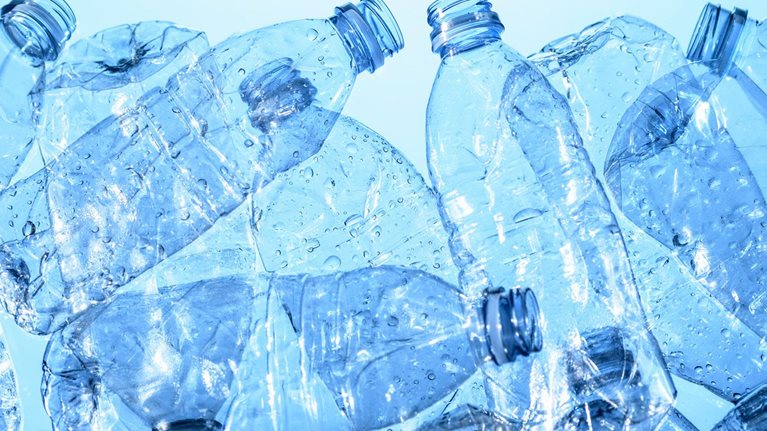Plastics recycling in Europe is expected to grow significantly in the next five to ten years, particularly in response to increased pressure from regulators and consumers. Governments and major brands are continuously discussing and refining targets to reduce waste and improve the circularity of the plastics value chain. And while players in the chemicals industry aspire to expand access to recycling, adopt new technologies, and grow sustainability efforts, many existing European recyclers that have pursued these goals for years have made little progress.
To better understand the reasons why—and to assess the readiness of the EU recycling industry to accommodate the necessary scale-up—we conducted interviews with 57 recycling companies in 12 European countries (see sidebar “About the survey”).1 Our findings confirm our hypotheses: despite positive boundary conditions, plastics recycling is not (yet) thriving as an industry; and many recyclers struggle to overcome a lack of product standardization, volatile customer demand, and inefficient sortation processes. These challenges have been exacerbated by the COVID-19 pandemic, which has introduced both short-term liquidity challenges and the potential for additional regulations.
This article provides context for the current state of Europe’s recycling industry as well as our perspectives on how it can overcome its hurdles and increase levels of plastics recycling. On this point, we offer four recommendations that could help the segment realize its potential.
The European recycling industry today
In 2017, the European Union set a target for recycling 50 percent of plastic packaging by 2025 and 55 percent by 2030.2 Brand owners across a variety of industries have also pledged to improve plastics usage and recycling through four main areas of focus, some committing to bold quantitative targets during this same period (Exhibit 1).3

For example, Unilever announced it will use at least 25 percent of recycled plastic in its packaging by 2025,4 by which time Coca-Cola aims to source 50 percent of its plastic bottles from recycled content.5 These efforts are representative of significant tailwinds to increase recycling and improve recyclers’ business performance.
An overview of European plastics recyclers
The European plastics recycling industry began long before the current targets were defined and was, from the start, a vital part of valorizing plastics waste, providing economically attractive alternatives to virgin plastics for selected, primarily lower-value applications, such as flower pots. Among our sample of 57 European recyclers, a large majority have been in the business for decades. Of these companies, 47 percent are considered small (capacity of up to ten kta6), 25 percent are medium size (ten to 50 kta), and 28 percent are large (more than 50 kta). Overall, these operations are of modest scale compared with producers of virgin plastics or the capacity of large packaging companies. Most European recyclers in our sample process polyolefins, but many other resins are also recycled in Europe today (Exhibit 2).

While most public attention focuses on plastics waste discarded by consumers, most European recyclers in our sample, surprisingly, collect plastics waste from industrial sources—primarily the automotive, construction, agriculture, and industrial packaging industries. Often, the collection and supply of these raw materials is based on self-negotiated agreements or preexisting relationships—for example, recyclers rely on clients or other industrial partners. Sixty percent of companies use industrial plastic waste as input material, while only 16 percent rely exclusively on municipal solid waste (MSW), and the remainder uses both industrial and MSW sources (Exhibit 3).

Recyclers’ dependence on industrial sources suggests that the flow from MSW (the largest stream of plastic waste) to the recycling industry is not yet working well. A range of reasons could help explain why this might be the case, including lower feedstock quality or higher contamination compared to industrial plastic waste, as well as existing alternative waste treatment routes with less complexity, such as waste-to-energy or incineration.
A future for chemical recycling?
Our survey focused on companies that practice mechanical recycling, which leaves polymer chains intact, as it is the most established method to process raw materials. However, recent years have seen a surge of interest in chemical-recycling technologies, which break plastic polymers down either to their building blocks (monomerization) or to a mix of cracked liquid polymers (pyrolysis). These substances can then be processed in refining or petrochemical plants and converted to new plastic resins or other petrochemical products, such as fuels. Chemical recycling can also prove useful as an outlet for low-quality plastic waste that cannot be mechanically processed.
One-quarter of the surveyed mechanical recyclers consider chemical recycling as potential competition for raw materials, while 35 percent view chemical-recycling technologies as adjacent players or potential partners that can complement the recycling landscape. Another 23 percent see chemical recycling as an interesting area for business growth, but a majority remains skeptical of its ecological footprint and economic viability, especially in the short to medium term. Indeed, chemical-recycling technologies are still nascent and have only recently been pursued at commercial scale.
Challenges for the European recycling industry
While some companies indicated promising growth over the past five years, more than half stated that their business had grown at a rate below GDP, stagnated, or even shrunk. Thus, significant challenges limit any tailwinds, resulting in a lack of perceptible uplift to recyclers’ businesses—a scenario that has only intensified amid the COVID-19 pandemic. With this in mind, we followed up with a subset of companies from our original survey and interviewed them on their perspectives (see sidebar “The impact of COVID-19 on recycling”).
The top two challenges named by respondents—before the pandemic but also persisting through the crisis—are unstandardized and poor product recyclability and the volatility of markets and customer demands (Exhibit 4).

Compelling meaningful change requires investment by both the recyclers themselves and other entities—which begs the question of how to improve overall business attractiveness. When companies were asked which factors could improve the attractiveness of the recycling business, the top answer was government incentives, such as mandates for recycled content, followed by public awareness and a shift in mindset to increase the acceptance of recycled material and remove any stigma associated with waste as a raw material. A further important requirement is competitive pricing with virgin plastics—for example, through taxes levied on virgin materials or subsidies for the use of recyclates.
Meeting the European aspiration for a step change in recycling
Equipped with a deeper understanding of the European recycling industry’s current reality, our study also yielded several recommendations that, when effectively implemented, could support the industry in achieving its collective growth aspirations.
Improve the quality and availability of feedstock for recycling. Specifically, recyclers can establish a more effective way to recover plastic from MSW. This will require a combination of better collection and sorting, the use of standardized materials (such as flexible or rigid packaging), and improved product designs to facilitate recyclability.
Several approaches can help promote the use of standardized materials. One is packaging differentiation, which allows consumers to identify resin types more easily. Another is furthering the use of flexible packaging in the circular economy—which is the goal of CEFLEX, a collaborative initiative of companies and associations in Europe. Both approaches have the shared objective of harmonizing design to increase the recyclability of materials. In addition, as changing regulations may eventually require such efforts anyway, standardizing materials in the short term will likely save money in the long term (and avoid last-minute scrambles).
Target incentives to enable closed-loop recycling. Today, most recyclers practice open-loop recycling, as closed-loop systems are not yet economically feasible. That may change, however, as customers’ attitudes continue evolving and new regulations take effect. The best incentive for companies to use recycled materials in their products might be from a reputational standpoint, rather than through increased regulation.
Regulators can draw from a variety of mechanisms to foster recycling, such as deposit refund systems, extended producer-responsibility schemes, recycling mandates, separate collection infrastructure, and levies or subsidies. In addition, extending appropriate incentives to increase the number of resin types recycled and their application both in the packaging and in the industrial realm could significantly increase the supply of high-quality plastic waste for mechanical recycling.
Make the industry economically more attractive and investable. We know that each step of the recycling chain must be improved, particularly collection and sorting. Economically speaking, for recyclers, the best way to improve collection is for consumers to separate their plastic waste from other forms of waste and to separate within types of plastics; empowering the consumer to reduce contamination and mixing can essentially pay for itself. In addition, investing in technologies such as AI and higher-quality washing systems can incrementally improve sorting and the quality of recycled materials, making them more competitive with virgin plastics.
Create a common marketplace for feedstock and products. One idea to help unlock the segment’s potential and address the challenge of poor market liquidity is creating a common marketplace for both raw materials and recyclates, thereby creating more liquidity and providing more supply and demand security for recyclers and their customers. The voluntary commitments submitted to the Circular Plastics Alliance in the European Union provide a first attempt at creating more transparency, but their first assessment published in 2019 illustrates the gap between committed supply and demand and falls significantly short of formulated ambitions by stakeholders along the entire value chain, highlighting the need for more actionable mechanisms.
While some uncertainty remains around how to scale plastics recycling, the pressure to adapt to sustainability and ever-evolving customer expectations is here to stay. Brand owners, recyclers, and players in chemicals each have a role to play. Those that respond quickly and decisively will drastically increase their chances of remaining competitive in the years to come.


